Rendezvous Hotel Perth Central
Rendezvous Hotel Perth Central is a CBD hotel located less than 10 minutes from major attractions including Kings Park, Perth Convention and Exhibition Centre, Perth Arena, Old Swan Brewery and the famous Matilda Bay Boatshed on Swan River. Whether you’re exploring city shopping on Hay Street and Murray Street Mall, visiting the new Elizabeth Quay or Yagan Square precinct, or here for business on St Georges Terrace, Rendezvous Hotel Perth Central is the perfect base for your Perth city stay. Enjoy free public transport via the Perth Cat Bus service, climb the renown Jacob’s ladder alongside Kings Park or visit popular Western Australian landmarks including Fremantle, Scitech Discovery Centre, Perth Mint, Water Town Rottnest.


_________________________________________________________________________________________________________
Plants in the Garden Outside:
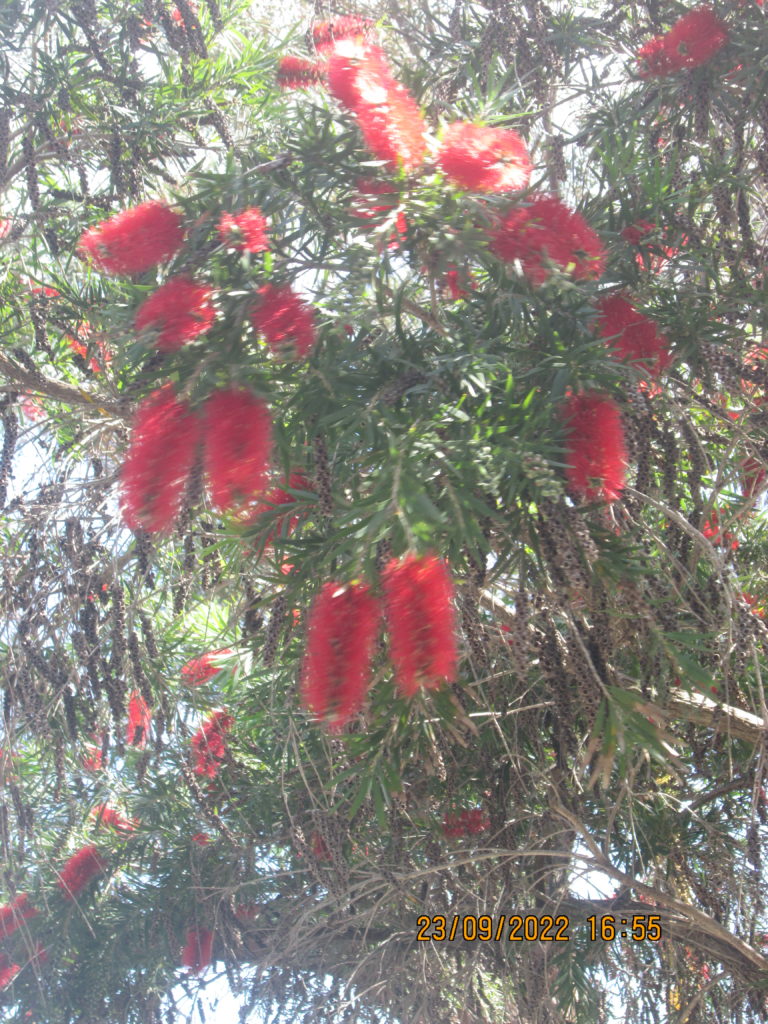
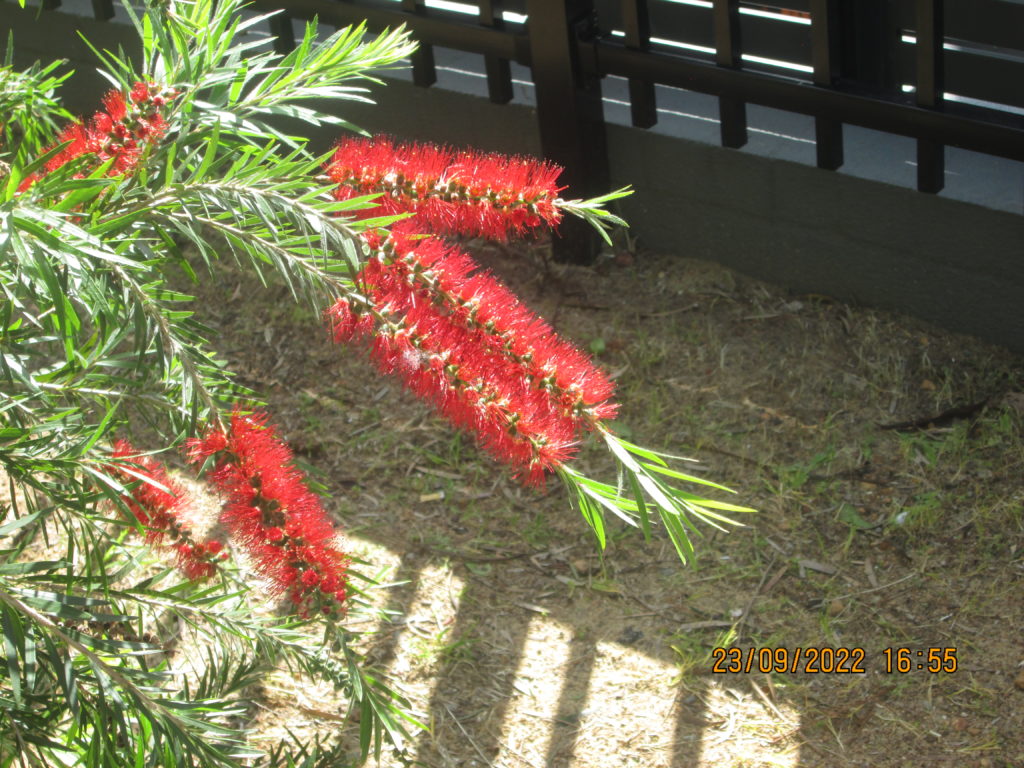
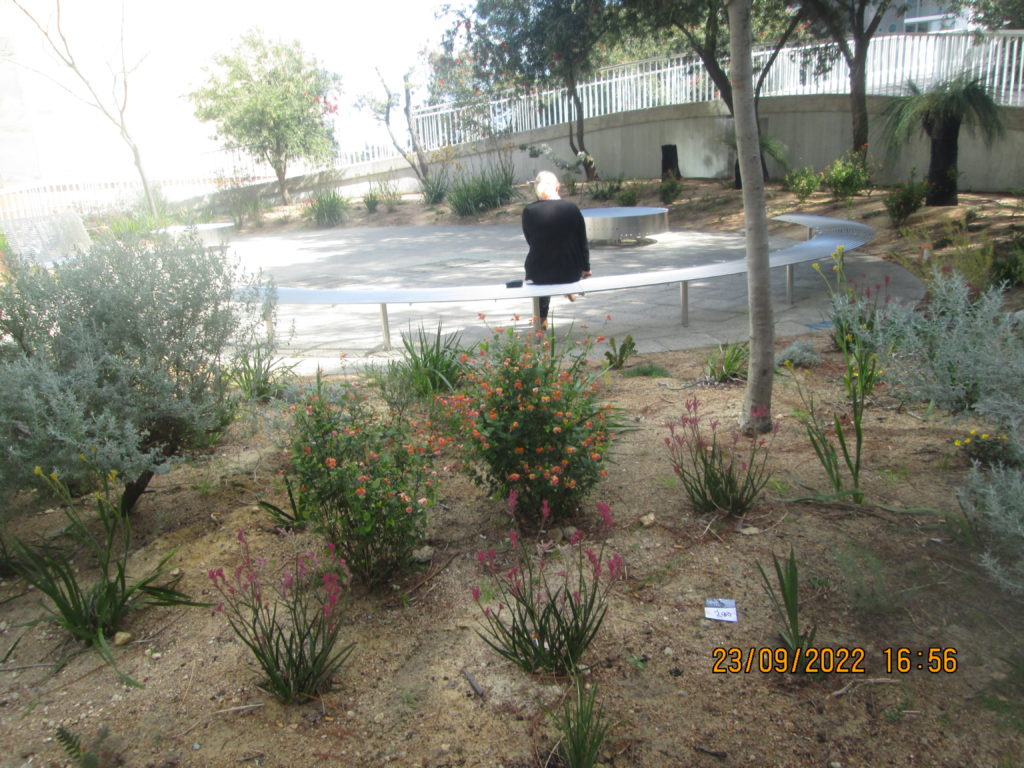
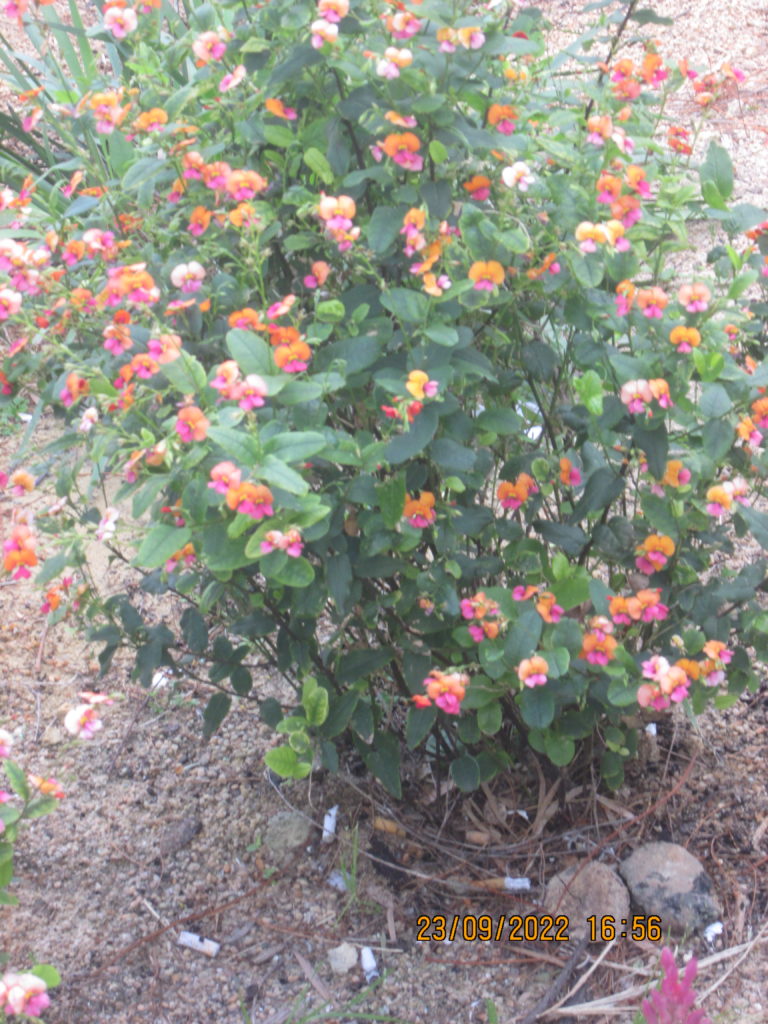
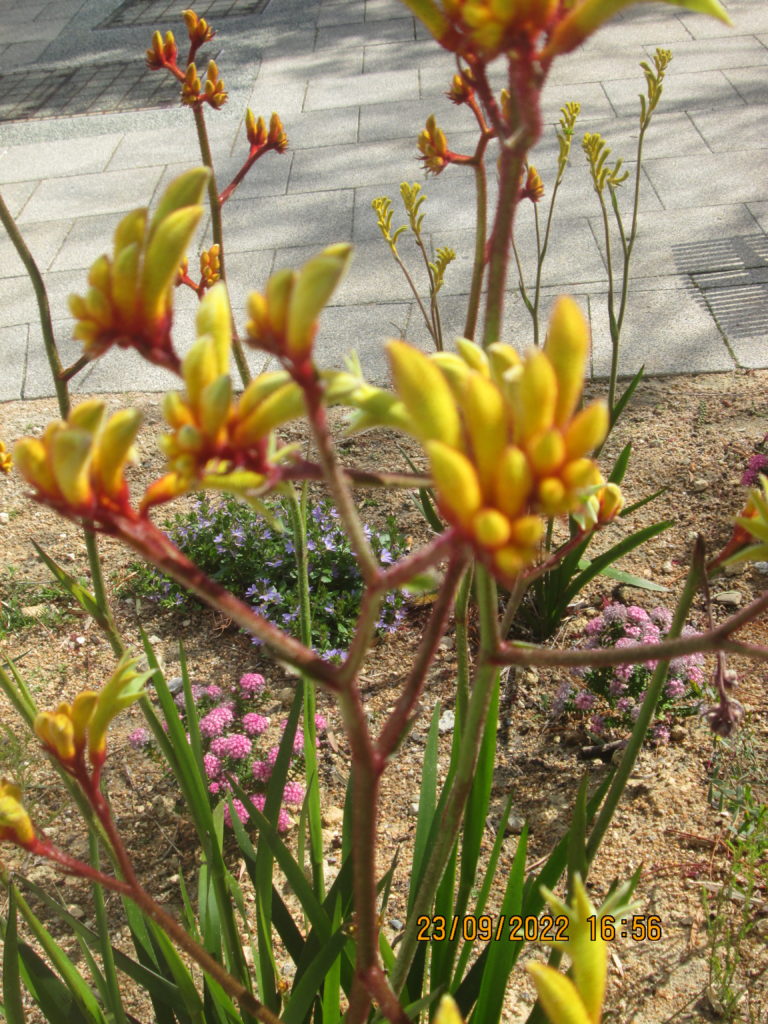
Kangaroo Paws
From Wikipedia, the free encyclopedia

aspect of a Anigozanthos manglesii showing the characteristic of the plant from which its name is derived

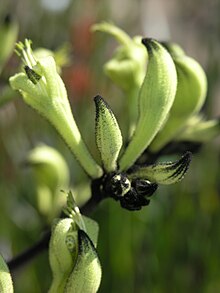
Kangaroo paw is the common name for a number of species, in two genera of the family Haemodoraceae, that are native to the south-west of Western Australia. These rhizomatous[1] perennial plants are noted for their unique bird-attracting flowers. The tubular flowers are coated with dense hairs and open at the apex with six claw-like structures which resemble kangaroo forelimbs, and it is from this paw-like formation that the common name “kangaroo paw” is derived.[2]
The kangaroo paw plant has been introduced into Japan and has been grown as a new ornamental crop mainly in Okinawa Island under a subtropical climate.[3]
______________________________________ ___________
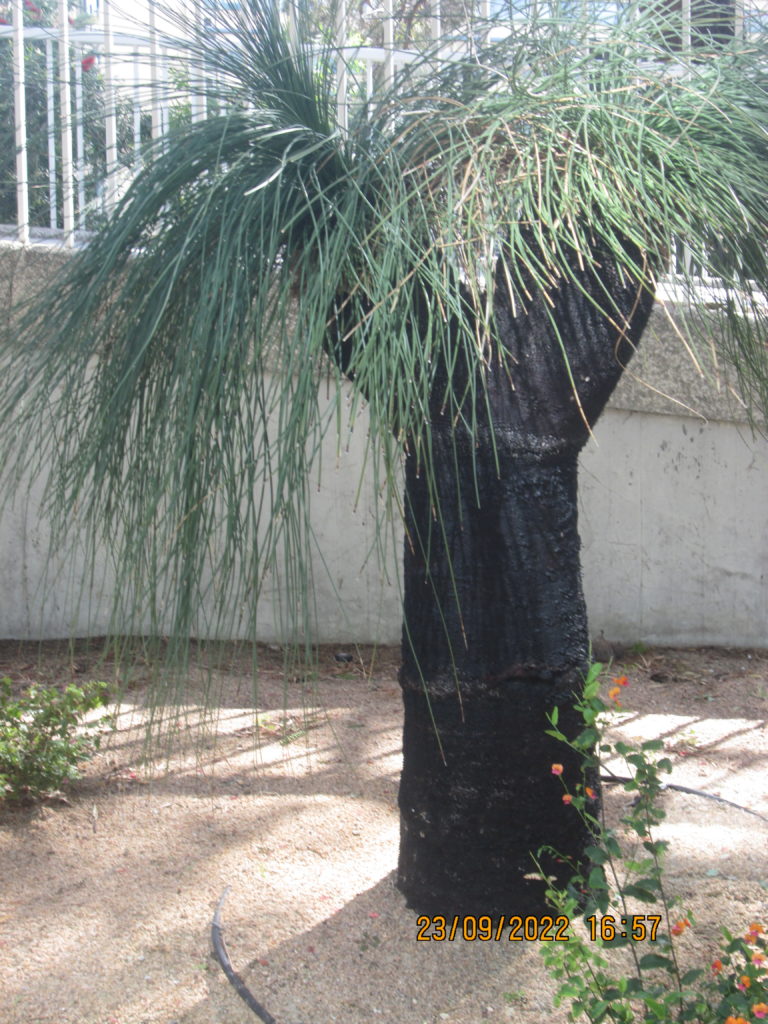
Xanthorrhoea preissii, Western Australia grasstree, Australian grasstree, or black boy, is an Australian plant. It is the most commonly seen species of the genus Xanthorrhoea. Its trunk can grow up to several metres tall and is often branched. In certain Aboriginal languages, it is called bukkup, baggup or kawee.
This is a transplanted grass tree that has been dug up and transplanted from the dry Australian bush. They are worth a fortune now and take many years to reach the size here. It is now illegal to dig them out of the ground to sell them.
See the website: The Grass Tree: Its Uses and Abuses …..
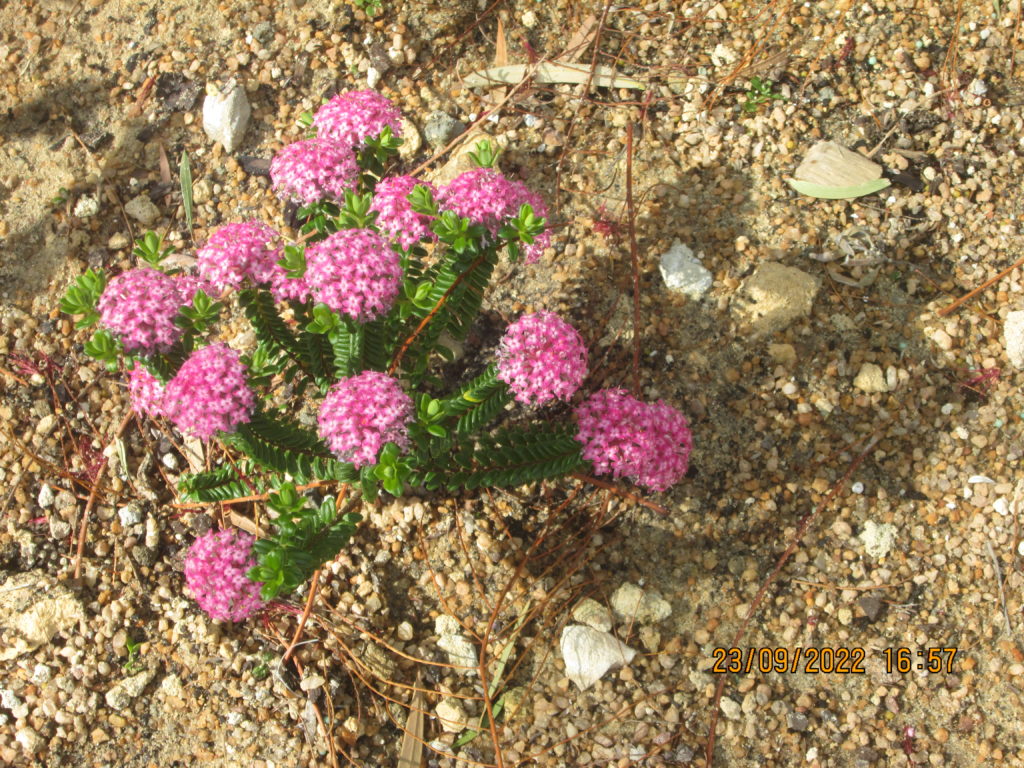
______________________________ ___________________
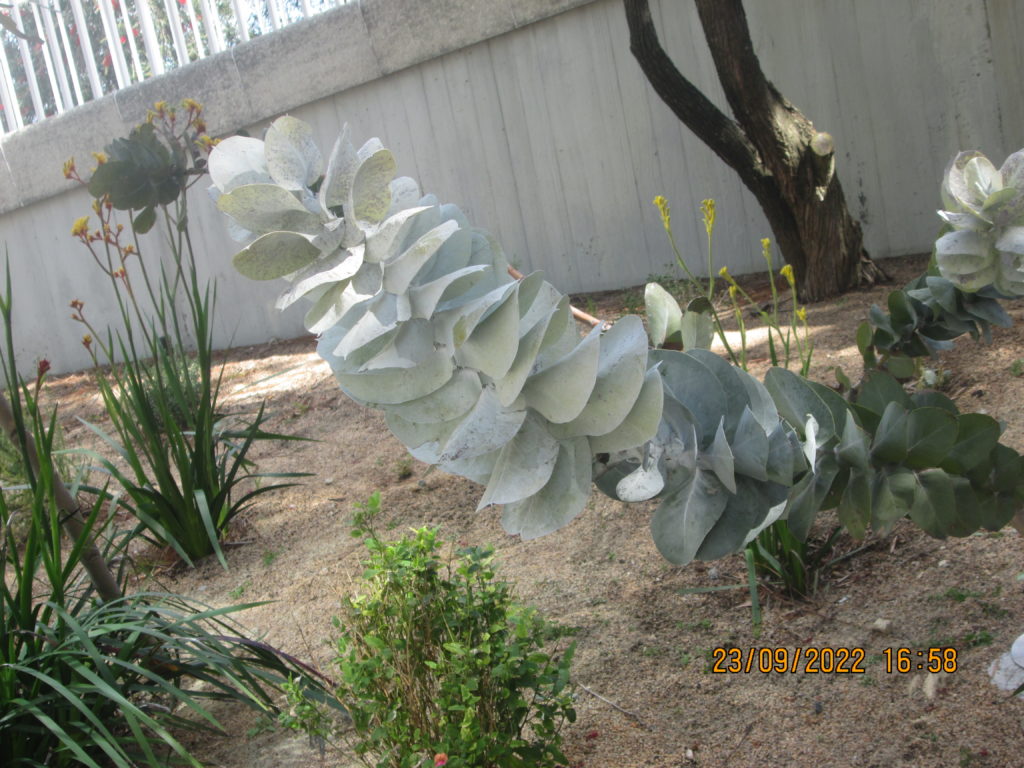
From Wikipedia, the free encyclopedia:
Eucalyptus Macrocarpa ……. One of the largest flowered gums. The gum is commonly known as mottlecah,[2] is a species of mallee that is endemic to the south-west of Western Australia. It has smooth bark, usually sessile, heart-shaped adult leaves arranged in opposite pairs, large red flowers and broad conical fruit.
Description
Eucalyptus macrocarpa is a mallee that typically grows to a height of 0.5–8 m (1 ft 8 in – 26 ft 3 in), has a sprawling or spreading habit, and forms a lignotuber. It has smooth, shiny, brownish over salmon-pink bark. Its crown is composed of juvenile leaves that are sessile, arranged in opposite pairs, heart-shaped with the bases wrapped around the stem, glaucous, 55–85 mm (2.2–3.3 in) long and 35–50 mm (1.4–2.0 in) wide. The flower buds are glaucous and are arranged singly in leaf axils on a peduncle 1–7 mm (0.039–0.276 in) long and a pedicel up to 5 mm (0.20 in) long. Mature buds are oval, 40–55 mm (1.6–2.2 in) long and 25–30 mm (0.98–1.18 in) wide with a beaked operculum. Flowering occurs from August to January or April or June and the flowers are red, or rarely, creamy white. The fruit is a sessile, woody, broadly conical capsule 12–20 mm (0.47–0.79 in) long and 33–45 mm (1.3–1.8 in) wide with the valves protruding above the rim of the fruit.[3][4]
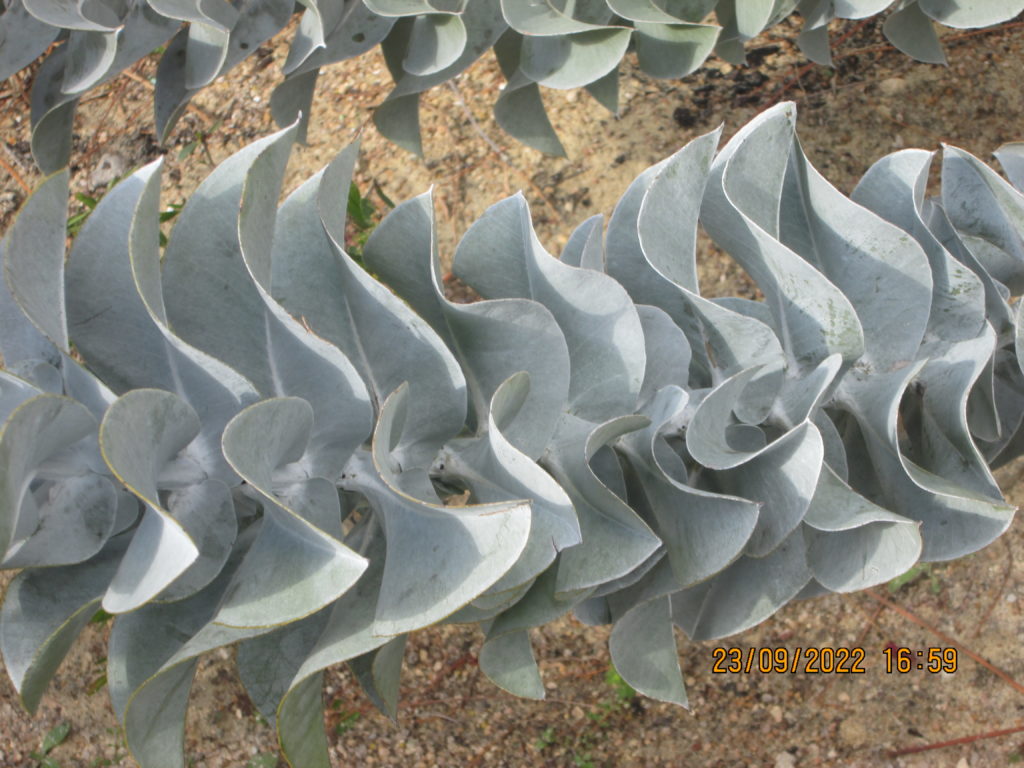

_________________________________________________
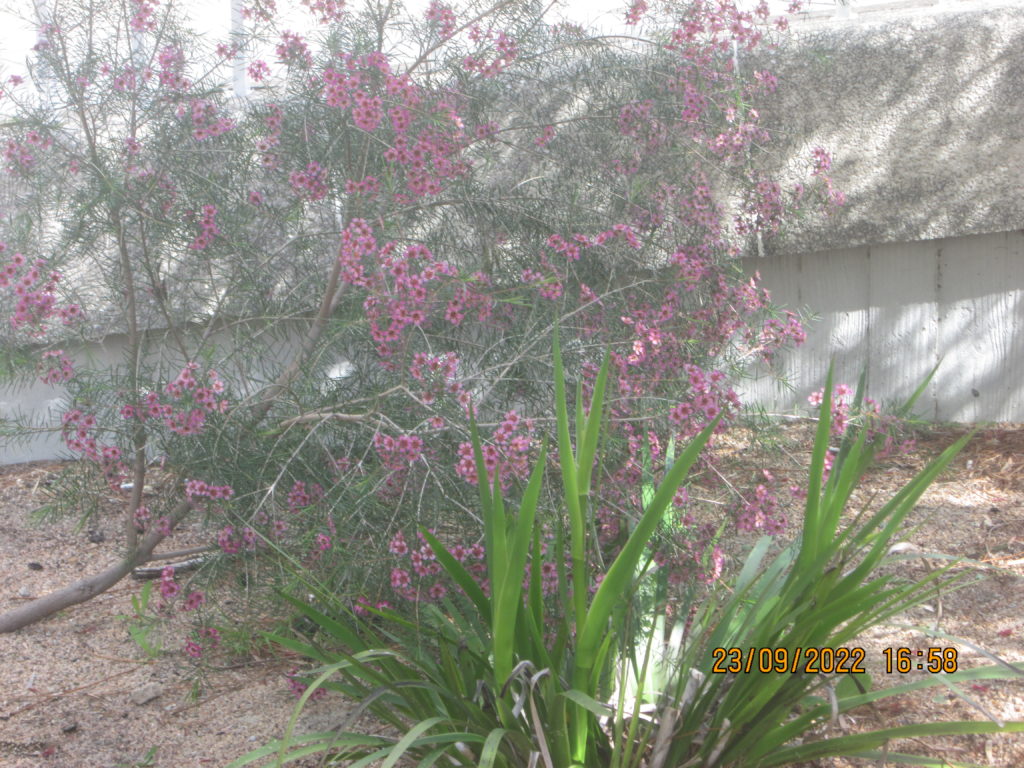
Geraldton Wax
From this website for Botanic Gardens and Parks Authority
Description
Chamelaucium uncinatum, also known by its common name of Geraldton Wax, is a dense but spreading shrub that can grow between two and six metres in both height and width. It is one of the most well-known Australian flowers, and is commonly used as a cut flower due to the showy blooms and their longevity once removed from the plant.
Geraldton Wax flowers in winter and spring months with a massive display of aromatic blooms that bees, butterflies and other insects simply love. As a result of plant development programs supporting the cut flower industry, there is a variety of colour forms available when these plants bloom, such as white, pink and purple, as well as a range of flower size. The waxy flowers are circular in shape and cover the shrub en masse.
Geraldton Wax is evergreen and has fine narrow foliage. Both frost and drought tolerant, this shrub is an excellent addition to any garden for its water-wise nature and showy display of flowers.
Propagation from seed is notoriously difficult, as the seeds tend to wait for the perfect conditions to germinate, but current season cuttings are known to take easily.
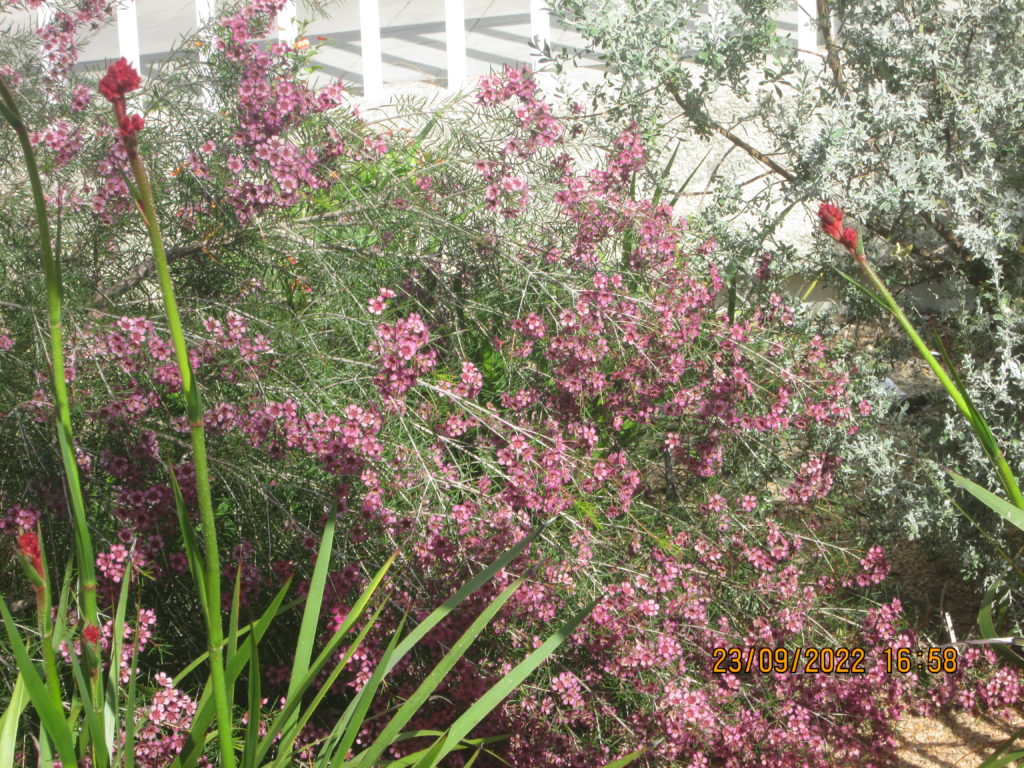
___________________________________________________
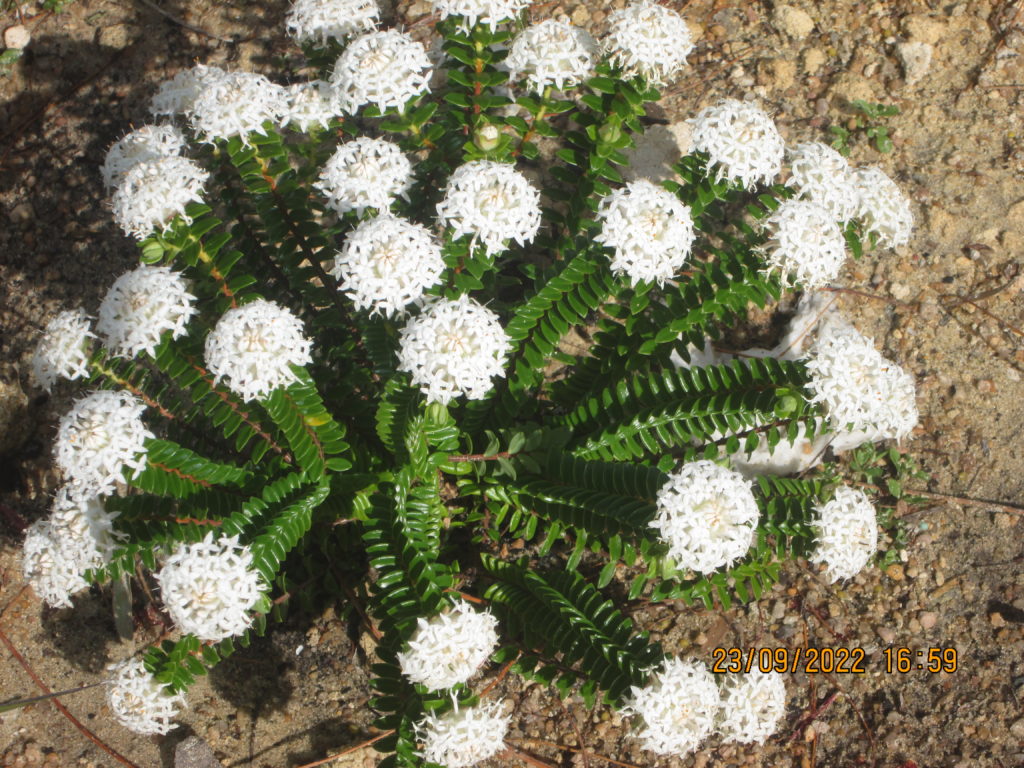
______________________________________________________________________________________________
